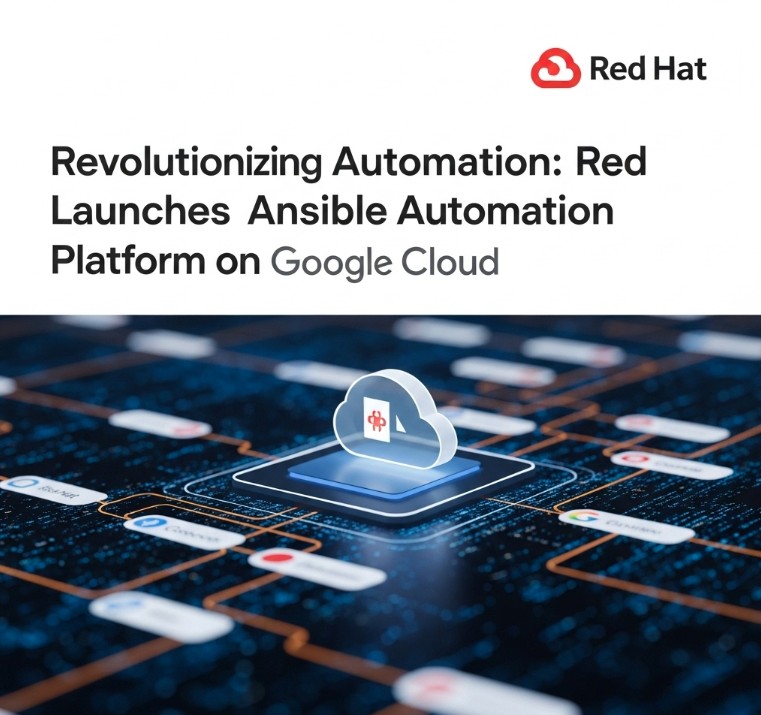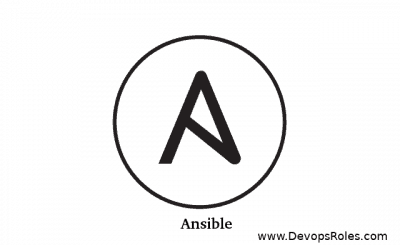The convergence of automation and cloud computing is reshaping IT operations, and Red Hat’s recent launch of the Ansible Automation Platform on Google Cloud signifies a major leap forward. This integration offers a powerful solution for streamlining IT workflows, enhancing efficiency, and accelerating digital transformation. For DevOps engineers, developers, and IT administrators, understanding how to leverage Ansible Automation Google Cloud is crucial for staying competitive. This comprehensive guide delves into the benefits, functionalities, and implementation details of this game-changing integration, empowering you to harness its full potential.
Table of Contents
- 1 Understanding the Synergy: Ansible Automation and Google Cloud
- 2 Deploying Ansible Automation Platform on Google Cloud
- 3 Automating Google Cloud Services with Ansible Automation Google Cloud
- 4 Ansible Automation Google Cloud: Advanced Techniques
- 5 Frequently Asked Questions
- 5.1 Q1: What are the prerequisites for deploying Ansible Automation Platform on Google Cloud?
- 5.2 Q2: How secure is using Ansible Automation Platform on Google Cloud?
- 5.3 Q3: Can I use Ansible Automation Platform on Google Cloud for hybrid cloud environments?
- 5.4 Q4: What are the costs associated with using Ansible Automation Platform on Google Cloud?
- 6 Conclusion
Understanding the Synergy: Ansible Automation and Google Cloud
Ansible, a leading automation engine, simplifies IT infrastructure management through its agentless architecture and intuitive YAML-based configuration language. Its ability to automate provisioning, configuration management, and application deployment across diverse environments makes it a favorite amongst IT professionals. Google Cloud Platform (GCP), on the other hand, provides a scalable and robust cloud infrastructure encompassing compute, storage, networking, and a vast array of managed services. The combination of Ansible Automation Platform on Google Cloud offers a compelling proposition: the power of Ansible’s automation capabilities seamlessly integrated with the scalability and flexibility of GCP.
Benefits of Using Ansible Automation Google Cloud
- Simplified Infrastructure Management: Automate the provisioning, configuration, and management of resources across your entire GCP infrastructure with ease.
- Increased Efficiency: Reduce manual effort and human error, leading to faster deployment cycles and improved operational efficiency.
- Enhanced Scalability: Leverage GCP’s scalability to manage infrastructure changes efficiently, allowing for rapid scaling up or down based on demand.
- Improved Security: Implement and enforce consistent security policies across your GCP environment, minimizing vulnerabilities and risks.
- Cost Optimization: Optimize resource utilization and reduce cloud spending by automating resource provisioning and decommissioning.
Deploying Ansible Automation Platform on Google Cloud
Deploying Ansible Automation Platform on Google Cloud can be achieved through various methods, each offering different levels of control and management. Here’s a breakdown of common approaches:
Deploying on Google Kubernetes Engine (GKE)
Leveraging GKE provides a highly scalable and managed Kubernetes environment for deploying the Ansible Automation Platform. This approach offers excellent scalability and resilience. The official documentation provides detailed instructions on deploying the platform on GKE. You’ll need to create a GKE cluster, configure necessary networking settings, and deploy the Ansible Automation Platform using Helm charts.
Steps for GKE Deployment
- Create a GKE cluster with appropriate node configurations.
- Set up necessary network policies and access control.
- Deploy the Ansible Automation Platform using Helm charts, customizing values as needed.
- Configure authentication and authorization for Ansible.
- Verify the deployment by accessing the Ansible Automation Platform web UI.
Deploying on Google Compute Engine (GCE)
For more control, you can deploy the Ansible Automation Platform on virtual machines within GCE. This approach requires more manual configuration but offers greater customization flexibility. You’ll need to manually install and configure the necessary components on your GCE instances.
Steps for GCE Deployment
- Create GCE instances with appropriate specifications.
- Install the Ansible Automation Platform components on these instances.
- Configure necessary network settings and security rules.
- Configure the Ansible Automation Platform database and authentication mechanisms.
- Verify the deployment and functionality.
Automating Google Cloud Services with Ansible Automation Google Cloud
Once deployed, you can leverage the power of Ansible Automation Google Cloud to automate a vast array of GCP services. Here are some examples:
Automating Compute Engine Instance Creation
This simple Ansible playbook creates a new Compute Engine instance:
- hosts: localhost
tasks:
- name: Create Compute Engine instance
google_compute_instance:
name: my-new-instance
zone: us-central1-a
machine_type: n1-standard-1
boot_disk_type: pd-standard
network_interface:
- network: default
Automating Cloud SQL Instance Setup
This example shows how to create and configure a Cloud SQL instance:
- hosts: localhost
tasks:
- name: Create Cloud SQL instance
google_sql_instance:
name: my-sql-instance
region: us-central1
database_version: MYSQL_5_7
settings:
tier: db-n1-standard-1
Remember to replace placeholders like instance names, zones, and regions with your actual values. These are basic examples; Ansible’s capabilities extend to managing far more complex GCP resources and configurations.
Ansible Automation Google Cloud: Advanced Techniques
Beyond basic deployments and configurations, Ansible offers advanced features for sophisticated automation tasks within Google Cloud.
Using Ansible Roles for Reusability and Modularity
Ansible roles promote code reusability and maintainability. Organizing your Ansible playbooks into roles allows you to manage and reuse configurations effectively across different projects and environments. This is essential for maintaining consistent infrastructure configurations across your GCP deployment.
Implementing Inventory Management for Scalability
Efficiently managing your GCP instances and other resources through Ansible inventory files is crucial for scalable automation. Dynamic inventory scripts can automatically discover and update your inventory, ensuring your automation always reflects the current state of your infrastructure.
Integrating with Google Cloud’s APIs
Ansible can directly interact with Google Cloud’s APIs through dedicated modules. This provides fine-grained control and allows you to automate complex operations not covered by built-in modules. This allows you to interact with various services beyond the basics shown earlier.
Frequently Asked Questions
Q1: What are the prerequisites for deploying Ansible Automation Platform on Google Cloud?
A1: You will need a Google Cloud project with appropriate permissions, a working understanding of Ansible, and familiarity with either GKE or GCE, depending on your chosen deployment method. You’ll also need to install the necessary Google Cloud SDK and configure authentication.
Q2: How secure is using Ansible Automation Platform on Google Cloud?
A2: Security is a paramount concern. Ansible itself utilizes SSH for communication, and proper key management is essential. Google Cloud offers robust security features, including network policies, access control lists, and Identity and Access Management (IAM) roles, which must be configured effectively to protect your GCP environment and your Ansible deployments. Best practices for secure configuration and deployment are critical.
Q3: Can I use Ansible Automation Platform on Google Cloud for hybrid cloud environments?
A3: Yes. One of Ansible’s strengths lies in its ability to manage diverse environments. You can use it to automate tasks across on-premises infrastructure and your Google Cloud environment, simplifying management for hybrid cloud scenarios.
Q4: What are the costs associated with using Ansible Automation Platform on Google Cloud?
A4: Costs depend on your chosen deployment method (GKE or GCE), the size of your instances, the amount of storage used, and other resources consumed. It’s essential to carefully plan your deployment to optimize resource utilization and minimize costs. Google Cloud’s pricing calculator can help estimate potential expenses.

Conclusion
Red Hat’s Ansible Automation Platform on Google Cloud represents a significant advancement in infrastructure automation. By combining the power of Ansible’s automation capabilities with the scalability and flexibility of GCP, organizations can streamline IT operations, improve efficiency, and accelerate digital transformation. Mastering Ansible Automation Google Cloud is a key skill for IT professionals looking to enhance their capabilities in the ever-evolving landscape of cloud computing. Remember to prioritize security best practices throughout the deployment and configuration process. This comprehensive guide provided a starting point; remember to refer to the official Red Hat and Google Cloud documentation for the most up-to-date information and detailed instructions. Ansible Automation Platform Documentation Google Cloud Documentation Red Hat Ansible. Thank you for reading the DevopsRoles page!

